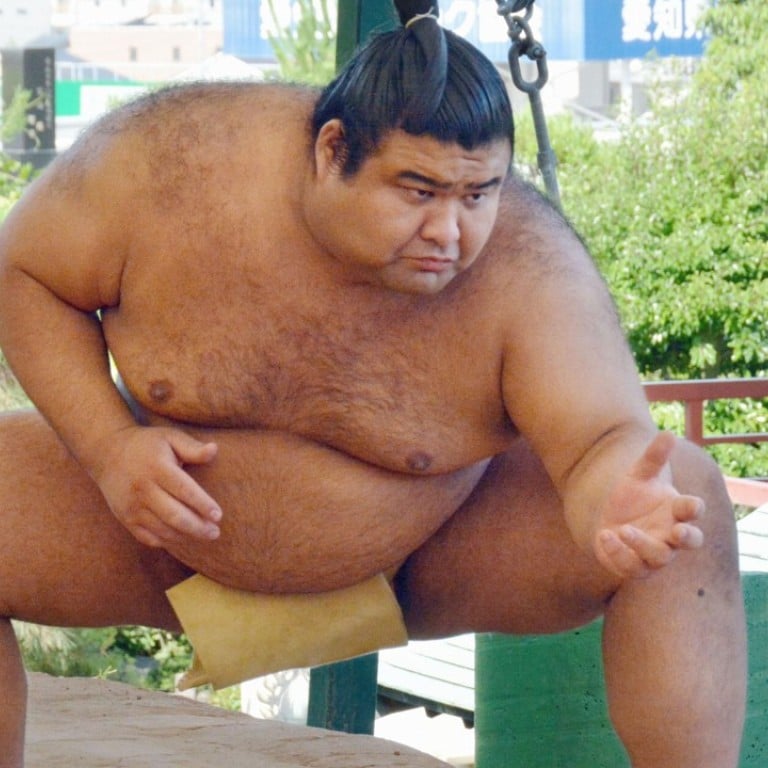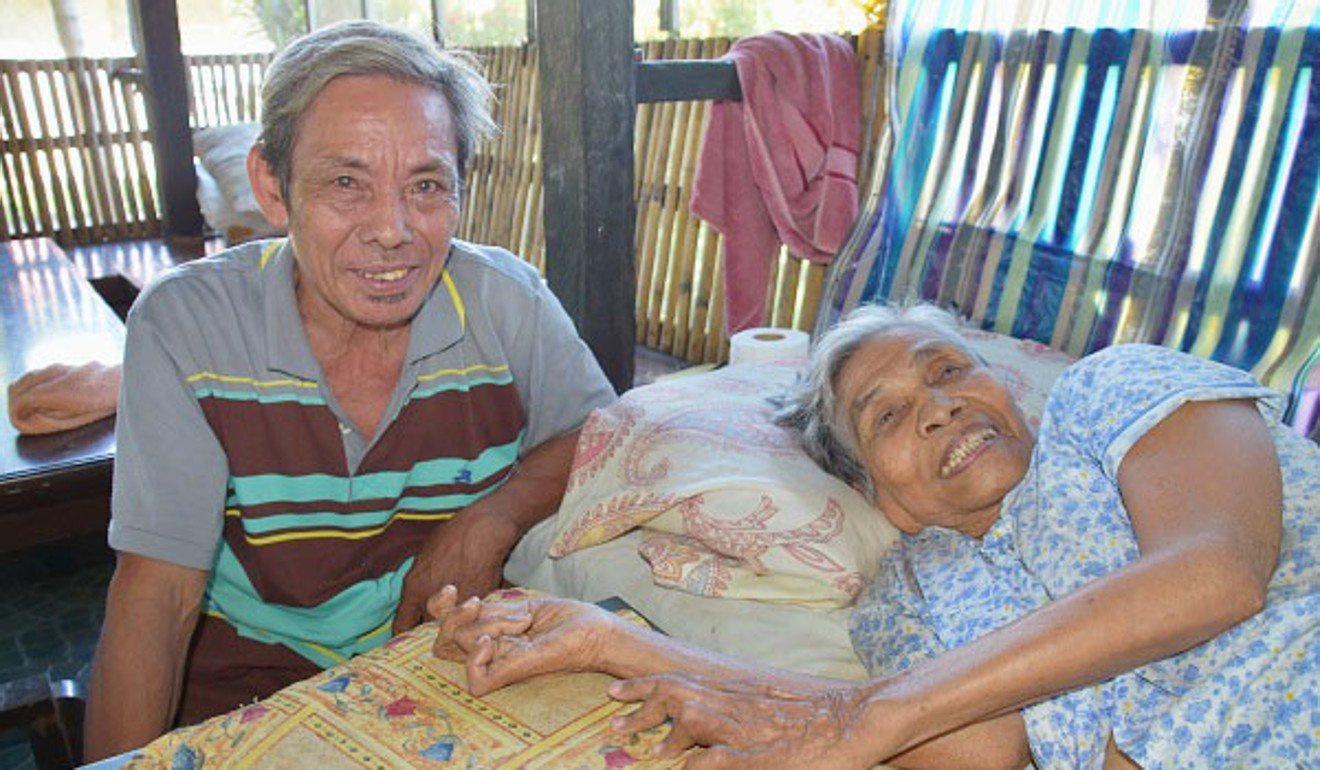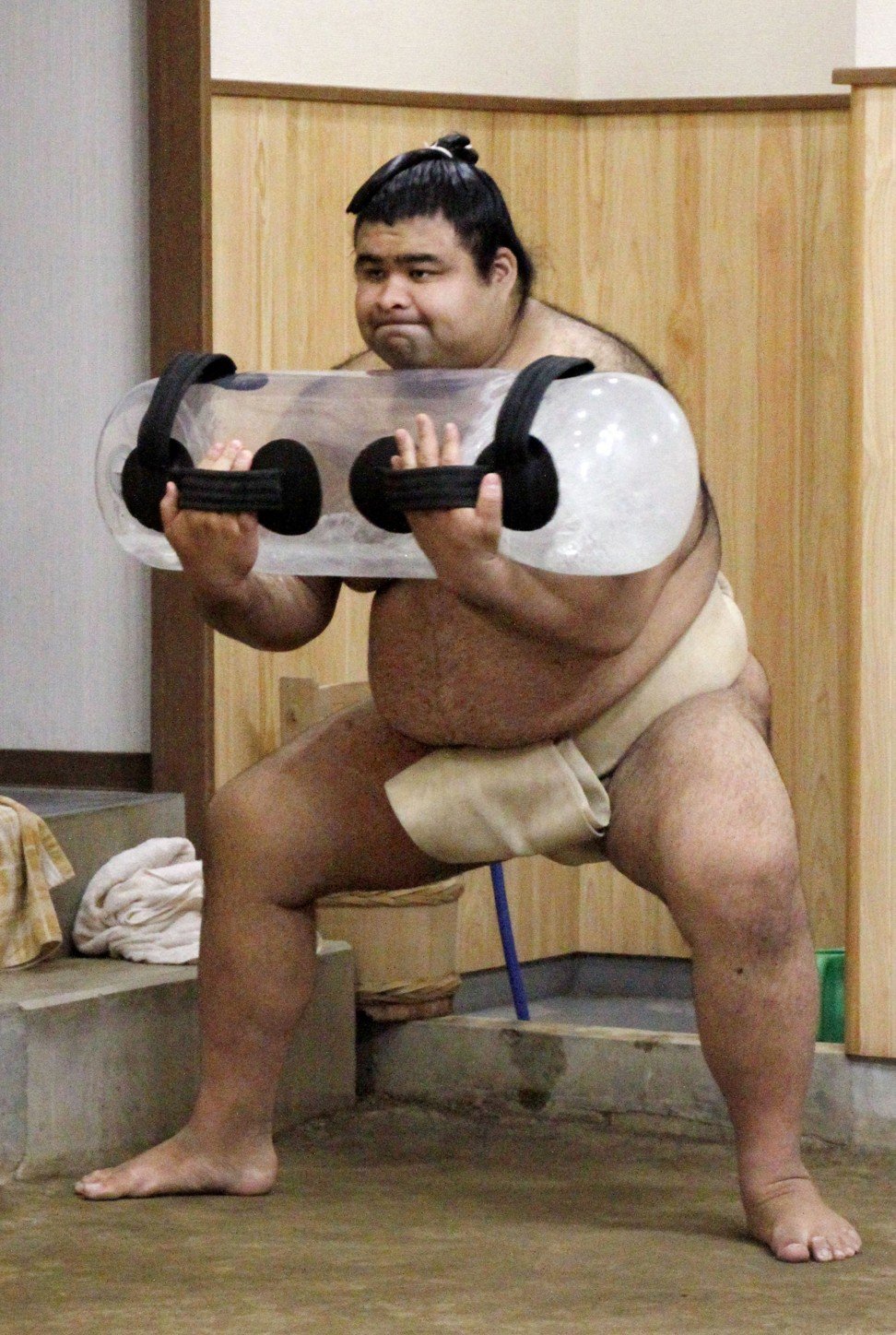
Half-Filipino sumo wrestler takes centre stage in Japan – and on the tiny Philippines island where his grandparents live
‘Takayasu’ who has a Filipina mother and Japanese father, has been promoted to the sport’s second-highest grade of ozeki
Sumo wrestler Takayasu’s grandmother has hardly been able to get up over the past three years because of arthritis.
But Susana Camacho’s state of mind and spirit is just as strong as her grandson, who is in top shape for the Nagoya Grand Sumo Tournament that begins Sunday in Aichi, Japan. Following his outstanding performance in the Summer Grand Sumo Tournament, Takayasu, 27, was promoted to the traditional Japanese sport’s second-highest rank of ozeki in May. He is the first ozeki named since 2015.
“Akira-kun [little boy]! He is my grandson. I’m very proud of my grandson,” Camacho beamed at her home on the tiny island of Jandayan in the central Philippines.
That is also where Takayasu’s mother, Bebelita, the eldest of the Camacho’s six children, was born and spent her early childhood.

Located more than 600 kilometres south of Manila, the 48.5 hectare island is part of the quiet town of Getafe in Bohol province. Jandayan has just over 3,600 residents, according to the 2015 census.
“We didn’t know he will have matches starting Sunday. But I’ll be very happy if he achieves the top rank in sumo wrestling. I hope he becomes No. 1,” said Camacho, who was joined by her husband, Maximo.
Since no local television channel broadcasts Takayasu’s sumo matches in Japan, and internet and cellphone signals are unstable on the island, the Camachos cannot watch his bouts. But even if they could, Takayasu’s grandparents admit they are not familiar with the intricacies of the sport.
So for now, the couple said they are satisfied just looking at the photo in their house of their famous grandson in his mawashi sumo belt.

Speaking mostly in the Cebuano language and using a little English, Camacho recalled that when Takayasu was around 10 years old, she stayed with the family in Ibaraki, northeast of Tokyo, for five months, and had no inkling her affectionate grandson would one day become a sumo wrestler.
While barely able to communicate verbally due to the language barrier, Camacho remembers Takayasu called her “Lola,” the Filipino word for “grandmother,” or “Lola Susing” by including her nickname.
“We’d always go out, especially to eat, and he would always hold my hand. And after eating, Akira would gesture to me while saying ‘Lola,’ that he is already full,” Camacho recalled.

Camacho said Takayasu was a very active kid, who always played ball with his older brother. But even at a young age, he was already disciplined, responsible and a child who listened to his parents.
“At that time, I didn’t expect him to be a sumo wrestler when he grew up. I just thought that Akira would be some kind of a professional someday, given the kind of support that his parents provided him,” Camacho said.
But when Takayasu became a sumo wrestler, Camacho said their family could not have been more proud. “I’m very happy when I see photos or news about Akira,” she said, adding almost her entire neighborhood knows about her famous grandson in Japan.

Takayasu, whose father is Japanese, visited Jandayan Island for the first time in 2014 when already a famous sumo wrester, and Camacho recalled telling him, “You’re like a carabao [water buffalo],” prompting Takayasu to laugh.
Camacho felt particularly good about that reunion because of Takayasu’s display of the traditional Filipino way of paying respect to elders by asking for her hand, placing it on his forehead, followed by a kiss.
Takayasu’s mother said her son told his grandparents and relatives how happy he was to see them, and that his recent victory was dedicated to his grandparents.

Camacho said it was a quick visit because the Takayasu only spent one night there, but she vividly remembers the sumo wrestler enjoying eating green mangoes outside the house, and the fish tinola [a Filipino clear soup with fish] served at dinner.
Camacho said Takayasu, her “very kind grandson,” sends her money monthly for her medicines. And given her age and health, she hopes Takayasu will visit them again in the Philippines since it is no longer possible for her and her husband to travel.
But as Takayasu prepares for the Nagoya Grand Sumo Tournament, his grandparents are praying for his success though confident “he can take any pressure and pain.”

